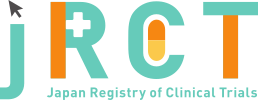臨床研究等提出・公開システム
|
Sept. 12, 2018 |
|
|
July. 23, 2024 |
|
|
jRCT2090220384 |
Kyoto Trial to Evaluate the Safety and Efficacy of iPSC-derived dopaminergic progenitors in the treatment of Parkinson's Disease (Kyoto Trial to Evaluate the Safety and Efficacy of iPSC-derived dopaminergic progenitors in the treatment of Parkinson's Disease) |
|
Kyoto Trial to Evaluate the Safety and Efficacy of iPSC-derived dopaminergic progenitors in the treatment of Parkinson's Disease |
Ryosuke Takahashi |
||
Kyoto University Hospital |
||
54 Kawahara-cho, Shogoin, Sakyo-ku, Kyoto 606-8507 |
||
+81-75-751-3771 |
||
neuroofc@kuhp.kyoto-u.ac.jp |
||
Nobukatsu Sawamoto |
||
Kyoto University Hospital |
||
54 Kawahara-cho, Shogoin, Sakyo-ku, Kyoto 606-8507 |
||
+81-75-751-3771 |
||
neuroofc@kuhp.kyoto-u.ac.jp |
COMPLETED |
Sept. 25, 2018 |
||
| 7 | ||
Interventional |
||
single group, non-control, open label |
||
open(masking not used) |
||
No |
||
1-2 |
||
1)The patient has a diagnosis of PD (clinically established or clinically probable) in accordance with the MDS Clinical Diagnostic Criteria for Parkinson's Disease (2015). |
||
1)The patient has a symptomatic organic lesion as detected by head MRI. |
||
| 50age old over | ||
| 70age old not | ||
Both |
||
Parkinson's disease |
||
Intervention type: Name of intervention:cell transplantation Dose form / Japanese Medical Device Nomenclature:OTHER Route of administration / Site of application:Intrastriatal Dose per administration:2.4 X 10^6 cells(for the first 3 patients),4.2-5.4X10^6 cells(for the 4th and later patients) cells Dosing frequency / Frequency of use:ONCE Planned duration of intervention:Single dose, N/A Intended dose regimen:Under general anesthesia using a stereotactic brain surgery system, human iPSC-derived dopaminergic progenitors will be transplanted into the bilateral putamen. For the first 3 patients, approximately 2.4X10^6 cells will be delivered at each side. For the 4th and later patients, 4.2-5.4X10^6 cells will be transplanted at each side. detailes of teratment arms:Immunosuppressant treatment will be started in the morning on the day of transplantation, continued until 52 weeks after transplantation, and then tapered off to zero over 12 weeks. In the early phase, the immunosuppressant is orally administered 0.03 to 0.15 mg/kg, twice a day, and the targeted blood concentration is within a range of 5-10 ng/mL as a trough value. |
||
Parkinson's disease |
||
cell transplantation |
||
D010300 |
||
D017690 |
||
1) Incidence and severity of adverse events 2) Presence or absence of graft expansion in the brain at 24 months after transplantation |
||
<Safety endpoints> |
||
| Kyoto University Hospital | |
| Japan Agency for Medical Research and Development |
| Sumitomo Pharma Co., Ltd. |
| Kyoto University Hospital Institutional Review Board | |
| 54 Syogoin-Kawaramachi, Sakyo-ku, Kyoto, Kyoto | |
| http://www.tiken.kuhp.kyoto-u.ac.jp/index.html | |
| Yes | |
May. 08, 2018 |
| UMIN000033564 | |
| UMIN Clinical Trials Registry (UMIN-CTR) |
| JMA-IIA00384 | |
| Japan |
